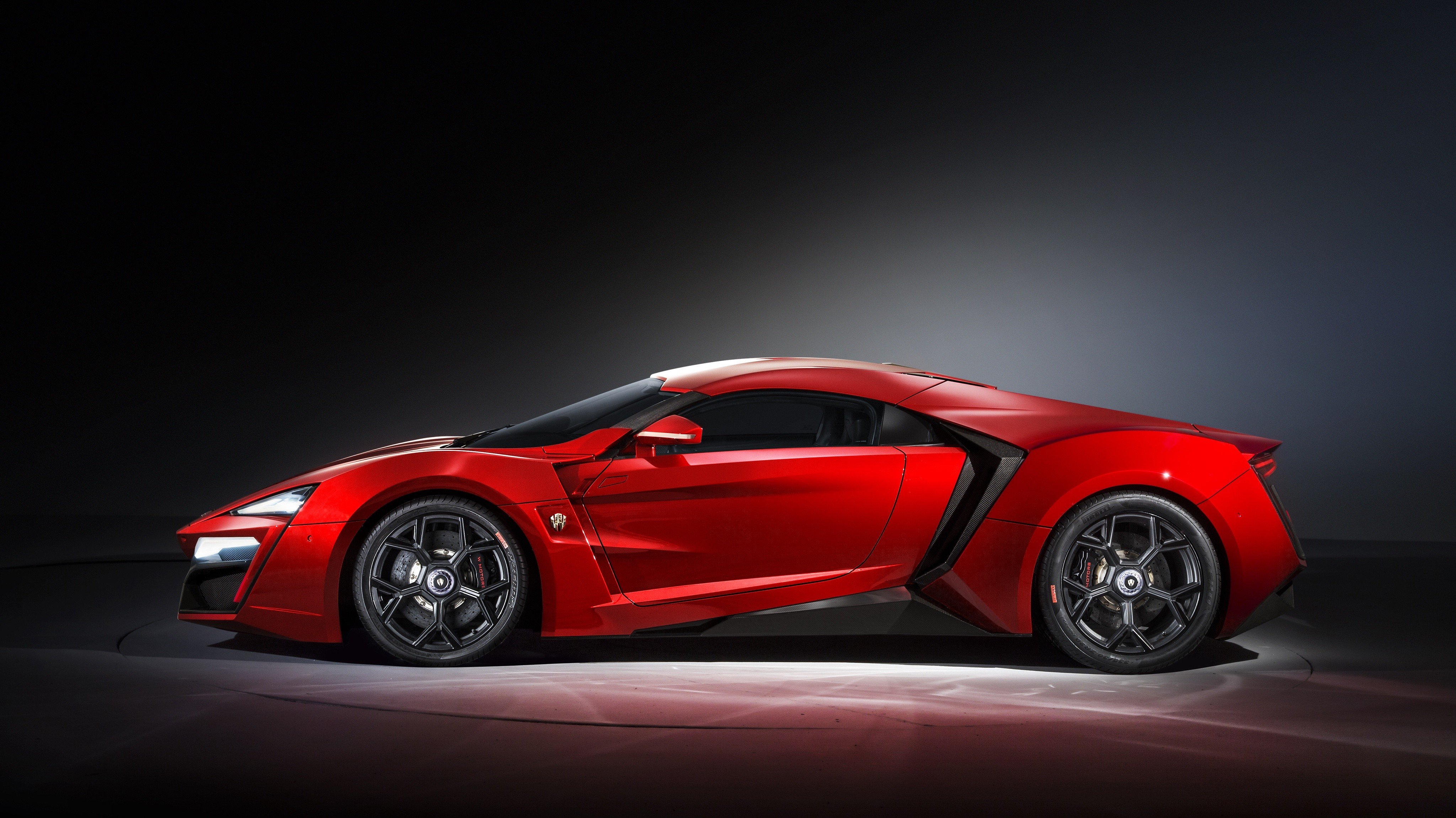Car Brand Ratings 2018: A Comprehensive Guide to Automotive Excellence
Car Brand Ratings 2018: A Comprehensive Guide to Automotive Excellence cars.truckstrend.com
The automotive industry is a dynamic landscape, constantly evolving with new technologies, designs, and consumer expectations. For car buyers, navigating this complex market can be daunting, making reliable information an invaluable asset. This is where car brand ratings come into play. Car Brand Ratings 2018 represent a snapshot of the industry’s performance, reliability, and owner satisfaction during that specific year. These ratings are not merely arbitrary numbers; they are the culmination of rigorous testing, extensive surveys, and expert analysis, designed to provide clarity and guidance to consumers making one of life’s significant purchases. Understanding these ratings from 2018 offers crucial insights into which brands excelled, which faced challenges, and what trends were shaping the future of the automotive world.
In 2018, the automotive market was characterized by robust SUV and truck sales, the continued rise of advanced driver-assistance systems (ADAS), and a growing interest in electrification, albeit still in its nascent stages for mainstream adoption. Brand ratings from this year reflected how well manufacturers adapted to these trends while maintaining core competencies like reliability and safety. For anyone looking at used cars from this vintage or simply curious about the industry’s historical performance, delving into the 2018 ratings provides a rich, informative perspective.
Car Brand Ratings 2018: A Comprehensive Guide to Automotive Excellence
The Landscape of Car Brand Ratings in 2018
To truly appreciate Car Brand Ratings 2018, it’s essential to understand who compiles them and what methodologies they employ. Several prominent organizations dedicate themselves to evaluating vehicles and brands, each with its unique focus and criteria.
Key Rating Bodies and Their Methodologies:
-
Consumer Reports (CR): Widely regarded for its independence and thoroughness, Consumer Reports combines data from its extensive member surveys on reliability (based on thousands of vehicles) with its own rigorous track testing and safety assessments. Their brand rankings typically reflect an average performance across a brand’s entire lineup, weighted heavily by reliability and road-test scores. In 2018, CR’s brand ratings were a highly anticipated annual release.

J.D. Power: Known for its comprehensive customer satisfaction surveys, J.D. Power conducts various studies, including the Vehicle Dependability Study (VDS), Initial Quality Study (IQS), and Automotive Performance, Execution and Layout (APEAL) Study.
- VDS (2018): Measured problems experienced by original owners of 2015 model-year vehicles during the past 12 months, focusing on long-term dependability.
- IQS (2018): Examined problems experienced by owners of new 2018 model-year vehicles during the first 90 days of ownership.
- APEAL (2018): Surveyed owners of new 2018 vehicles on how gratifying their new car is to own and drive.

J.D. Power’s brand rankings are a composite of these detailed studies, offering insights into both initial quality and long-term satisfaction.
-
Insurance Institute for Highway Safety (IIHS) and National Highway Traffic Safety Administration (NHTSA): While not providing overall "brand ratings" in the same vein as CR or J.D. Power, these organizations are crucial for safety evaluations.

- IIHS: Conducts rigorous crash tests (frontal, side, roof strength, head restraints) and evaluates headlight performance and front crash prevention systems. Their "Top Safety Pick" and "Top Safety Pick+" awards are highly coveted and contribute significantly to a brand’s overall perception of safety in 2018.
- NHTSA: Administers the government’s 5-Star Safety Ratings Program, providing frontal crash, side crash, and rollover ratings for new vehicles.
Criteria for Evaluation:
In 2018, the core criteria remained consistent:
- Reliability/Dependability: How often a vehicle breaks down and the cost/severity of repairs.
- Owner Satisfaction: How happy owners are with their purchase, encompassing comfort, features, and overall experience.
- Safety: Crash test performance and availability/effectiveness of advanced safety features.
- Road Test/Performance: Driving dynamics, acceleration, braking, handling, and fuel economy.
- Value: Resale value, cost of ownership, and competitive pricing.
Decoding the Metrics: What 2018 Ratings Mean for You
Understanding the various metrics used by rating agencies is key to interpreting Car Brand Ratings 2018 effectively. Each metric offers a distinct perspective on a brand’s strengths and weaknesses.
-
Reliability: This is often the most critical factor for many buyers. High reliability scores in 2018 meant a brand’s vehicles were less likely to experience mechanical issues, electronic glitches, or other problems requiring repairs. Brands consistently at the top for reliability in 2018, such as Toyota and Lexus, indicated a strong track record of engineering robustness and quality control. For a used car from 2018, this translates directly into lower potential maintenance costs and fewer headaches.
-
Owner Satisfaction: A high owner satisfaction rating implies that a brand delivered on its promises and met or exceeded customer expectations. This goes beyond just reliability; it encompasses the driving experience, the functionality of infotainment systems, the comfort of the interior, and the overall enjoyment of owning the vehicle. Brands like Subaru and Porsche often scored highly in this area in 2018, indicating a strong connection with their customer base.
-
Safety: The focus on safety in 2018 was increasing, with ADAS becoming more common. Brands that consistently earned "Top Safety Pick+" awards from IIHS or 5-star ratings from NHTSA demonstrated a commitment to protecting occupants. For instance, Volvo and Subaru were frequently cited for their robust safety features and strong crash test performance in 2018.
-
Road Test/Performance: This metric evaluates how well a vehicle drives. It considers factors like engine power, transmission smoothness, handling, braking distance, ride comfort, and fuel efficiency. Brands known for their performance, like BMW and Audi, consistently scored well in this area in 2018, while more utilitarian brands might have focused on different priorities.
-
Value: While not always a direct "rating" like reliability, value is a crucial consideration. It includes factors like initial purchase price, fuel economy, insurance costs, and perhaps most importantly, resale value. Brands like Honda and Toyota consistently performed well in terms of long-term value in 2018, making their vehicles a wise financial choice.
Top Performers and Notable Trends in 2018 Car Brand Ratings
The year 2018 saw some established players maintain their dominance, while others made significant strides. Here’s a look at some of the highlights and trends:
-
Reliability Champions: Japanese brands, particularly Lexus and Toyota, consistently led the pack in reliability ratings from sources like Consumer Reports and J.D. Power. Their commitment to meticulous engineering and proven components ensured fewer problems for owners. Mazda also showed strong performance in reliability, steadily climbing the ranks.
-
Luxury Leaders: In the luxury segment, Genesis (Hyundai’s luxury sub-brand) emerged as a surprisingly strong contender, often topping charts for initial quality and dependability in its early years. Traditional luxury stalwarts like Audi and BMW continued to impress with their performance, technology, and interior quality, though sometimes trailing Japanese luxury brands slightly in long-term reliability. Porsche consistently ranked high in owner satisfaction and performance.
-
Mainstream Excellence: Subaru continued its ascent in overall brand ratings, lauded for its strong safety scores, all-wheel-drive capabilities, and high owner satisfaction. Honda and Kia also performed very well across multiple metrics, offering a strong blend of reliability, features, and value.
-
Safety Innovators: Volvo remained synonymous with safety, consistently earning top marks from IIHS. Subaru also stood out with its standard EyeSight driver-assist technology. The increasing adoption of features like automatic emergency braking, lane-keeping assist, and adaptive cruise control across various brands was a significant trend in 2018.
-
Challenges and Areas for Improvement: Some domestic brands and certain European brands often struggled with infotainment system glitches or minor initial quality issues in J.D. Power’s IQS, though many improved in long-term dependability studies. Brands with a smaller market share or niche focus sometimes saw more variability in their ratings.
Overall, 2018 highlighted a market where consumers valued a balance of reliability, safety, and modern technology. Brands that successfully delivered on these fronts were rewarded with higher ratings and stronger consumer confidence.
How to Interpret and Utilize 2018 Ratings for Your Benefit
Car Brand Ratings 2018 are powerful tools, but they must be used wisely. Here’s how to get the most out of them:
-
Don’t Rely on a Single Source: Each rating body has a different methodology and focus. Consumer Reports emphasizes reliability and road tests, while J.D. Power focuses on owner surveys. Cross-referencing multiple sources provides a more balanced and comprehensive picture of a brand’s performance.
-
Consider Your Personal Needs and Priorities: A brand rated highly for performance might not be the best choice if your priority is fuel economy or cargo space. If you’re buying a used 2018 model, reliability and long-term dependability should be paramount. If you’re looking for a family vehicle, safety ratings and interior space will be more important.
-
Look at Model-Specific Ratings: While brand ratings provide an overall impression, individual models within a brand’s lineup can vary significantly. A brand might have an excellent overall rating, but a specific model might have known issues. Always delve into reviews and ratings for the exact year, make, and model you are considering.
-
Understand the Methodology: Knowing how ratings are compiled helps you gauge their relevance. Reliability data, for example, is often based on models that are a few years old (e.g., 2018 VDS for 2015 models), which is perfect if you’re looking at a used 2018 car, but less so for brand-new models.
-
Factor in the Human Element: Ratings are statistics, but your personal experience matters. Test drive the vehicle, assess its comfort, and evaluate how well its features align with your lifestyle. Talk to current owners if possible.
Challenges and Nuances in Car Brand Ratings
Despite their utility, car brand ratings are not without their complexities and potential challenges:
- Lag in Data: Reliability ratings, by their nature, often rely on data from previous model years. This means a 2018 reliability rating is often based on the performance of 2015-2017 models. While this is excellent for evaluating used cars, it might not fully capture the quality of a brand-new, redesigned model launched in late 2018.
- Subjectivity vs. Objectivity: While crash tests are objective, elements like "owner satisfaction" can be subjective. What one person considers a fantastic infotainment system, another might find frustrating.
- New Technologies: As more advanced features (like complex ADAS or large touchscreens) were introduced in 2018, they sometimes presented initial quality "bugs" that could drag down a brand’s IQS score, even if the underlying mechanicals were solid. These issues often get resolved via software updates or minor revisions in subsequent years.
- Brand Perception vs. Reality: Sometimes, a brand’s reputation (good or bad) can precede its actual performance in ratings. It’s crucial to look at the data objectively rather than relying solely on anecdotal evidence or long-held beliefs.
- Small Sample Sizes: For niche brands or low-volume models, the sample size for owner surveys might be smaller, potentially leading to less statistically robust results.
Solutions to these challenges involve combining multiple sources, focusing on data points most relevant to your purchase (e.g., long-term reliability for a used car), and always conducting your own due diligence, including a thorough inspection and test drive.
Car Brand Ratings 2018 Summary Table
Below is a summary table reflecting general performance and perception of various car brands in 2018, primarily drawing insights from sources like Consumer Reports and J.D. Power’s aggregated findings for that year. Please note that exact numerical scores varied slightly between different reports and metrics (e.g., reliability vs. initial quality). The "Overall Score/Ranking" column represents a generalized assessment of their standing across multiple criteria, often based on CR’s holistic brand rankings which combine road-test scores, predicted reliability, owner satisfaction, and safety. The "Price" column as specified in the prompt is not applicable to ratings; instead, I’ve used "Overall Score/Ranking (Generalized)" to reflect the brand’s performance.
| Rank (Generalized) | Car Brand | Overall Score/Ranking (Generalized) | Key Strengths (2018) | Notable Models (2018) |
|---|---|---|---|---|
| 1 | Genesis | Excellent (Often Top 3) | Reliability, Initial Quality, Owner Satisfaction, Luxury Value | G80, G90 |
| 2 | Audi | Excellent | Performance, Interior Quality, Technology, Safety | A4, Q5, A6 |
| 3 | BMW | Excellent | Driving Dynamics, Luxury, Performance, Safety | 3 Series, 5 Series, X5 |
| 4 | Lexus | Excellent | Reliability, Owner Satisfaction, Quiet Interiors, Resale Value | RX, ES, LS |
| 5 | Porsche | Excellent | Driving Dynamics, Owner Satisfaction, Performance, Build Quality | 911, Macan, Cayenne |
| 6 | Subaru | Very Good | Safety, AWD Capability, Owner Satisfaction, Reliability | Outback, Forester, Impreza |
| 7 | Toyota | Very Good | Reliability, Resale Value, Practicality, Safety | Camry, RAV4, Highlander |
| 8 | Mazda | Very Good | Driving Dynamics, Reliability, Interior Quality (for price) | Mazda3, CX-5, Mazda6 |
| 9 | Honda | Very Good | Reliability, Resale Value, Fuel Economy, Practicality | Civic, CR-V, Accord |
| 10 | Kia | Very Good | Initial Quality, Value, Features, Design | Stinger, Sorento, Optima |
| 11 | Volvo | Good/Very Good | Safety, Interior Design, Comfort, Technology | XC60, S90, XC90 |
| 12 | Hyundai | Good | Value, Initial Quality, Warranty, Features | Elantra, Santa Fe, Sonata |
| 13 | Chrysler | Average | Minivan utility (Pacifica) | Pacifica, 300 |
| 14 | Ford | Average | Truck sales, Technology, Performance (some models) | F-150, Escape, Focus |
| 15 | Chevrolet | Average | Trucks, Performance (Corvette), Value | Silverado, Equinox, Cruze |
| 16 | Nissan | Average | Value, CVT Technology (can be mixed reviews) | Rogue, Altima, Murano |
| 17 | Mercedes-Benz | Good (Luxury Segment) | Luxury, Technology, Performance | C-Class, E-Class, GLC |
| 18 | Dodge | Below Average | Performance (V8 models), Muscle Cars | Challenger, Charger |
| 19 | Jeep | Below Average | Off-Road Capability, Brand Image | Wrangler, Grand Cherokee |
| 20 | Fiat | Below Average/Poor | Style, Niche Appeal | 500, 124 Spider |
Note: This table provides a generalized overview based on various 2018 reports. Specific rankings and scores would vary by the individual study (e.g., J.D. Power IQS vs. VDS, or Consumer Reports overall brand score).
Frequently Asked Questions (FAQ) about Car Brand Ratings 2018
Q1: Why are Car Brand Ratings 2018 still relevant today?
A1: Car Brand Ratings 2018 are highly relevant for anyone considering a used vehicle from that model year. They provide crucial insights into the long-term reliability, owner satisfaction, and safety performance of cars that are now 5-6 years old, helping buyers make informed decisions about durability and potential maintenance costs.
Q2: What was the most important factor in 2018 car brand ratings?
A2: While safety and performance were significant, reliability and owner satisfaction were consistently among the most critical factors influencing overall brand ratings in 2018. Consumers increasingly valued dependable vehicles that provided a positive ownership experience.
Q3: Did electric vehicles (EVs) significantly impact 2018 ratings?
A3: In 2018, EVs were still a relatively niche market. While Tesla had a strong presence, its reliability scores were often inconsistent due to new technologies and production ramps. Most major rating bodies focused predominantly on internal combustion engine (ICE) vehicles, as they comprised the vast majority of the market. The impact of EVs on overall brand ratings was minimal for mainstream brands at that time.
Q4: How did advanced driver-assistance systems (ADAS) affect 2018 ratings?
A4: ADAS features like automatic emergency braking, lane-keeping assist, and adaptive cruise control were becoming more common in 2018. Their presence and effectiveness significantly influenced safety ratings (IIHS, NHTSA) and contributed to owner satisfaction, particularly when they functioned seamlessly. However, some early ADAS implementations could also lead to initial quality complaints.
Q5: Are brand ratings more important than individual model ratings?
A5: Both are important. Brand ratings give you a general idea of a manufacturer’s overall quality and consistency. However, always check individual model ratings for the specific car you’re interested in, as a brand’s overall performance might not perfectly reflect every single model in its lineup. Some brands excel in one segment (e.g., trucks) but lag in others (e.g., sedans).
Q6: Where can I find more detailed 2018 car brand rating information?
A6: Reputable sources like Consumer Reports, J.D. Power, Kelley Blue Book (KBB), and Edmunds are excellent places to find more detailed historical data, including specific model reviews and comparisons from 2018. Many of these organizations archive their past reports online.
Conclusion
Car Brand Ratings 2018 offer a rich historical perspective on the automotive industry’s performance during a pivotal year. They illuminate the brands that consistently delivered on reliability, safety, owner satisfaction, and value, while also highlighting the emerging trends and challenges of the time. For anyone looking to understand the quality landscape of vehicles from that period, whether for a used car purchase or simply for academic interest, these ratings are an indispensable resource.
By understanding the methodologies behind these ratings, interpreting their various metrics, and utilizing them judiciously, consumers can gain a significant advantage. While the automotive world continues its relentless march forward, the insights from 2018 serve as a valuable benchmark, reminding us of the enduring qualities that define excellence in vehicle manufacturing and ownership.






